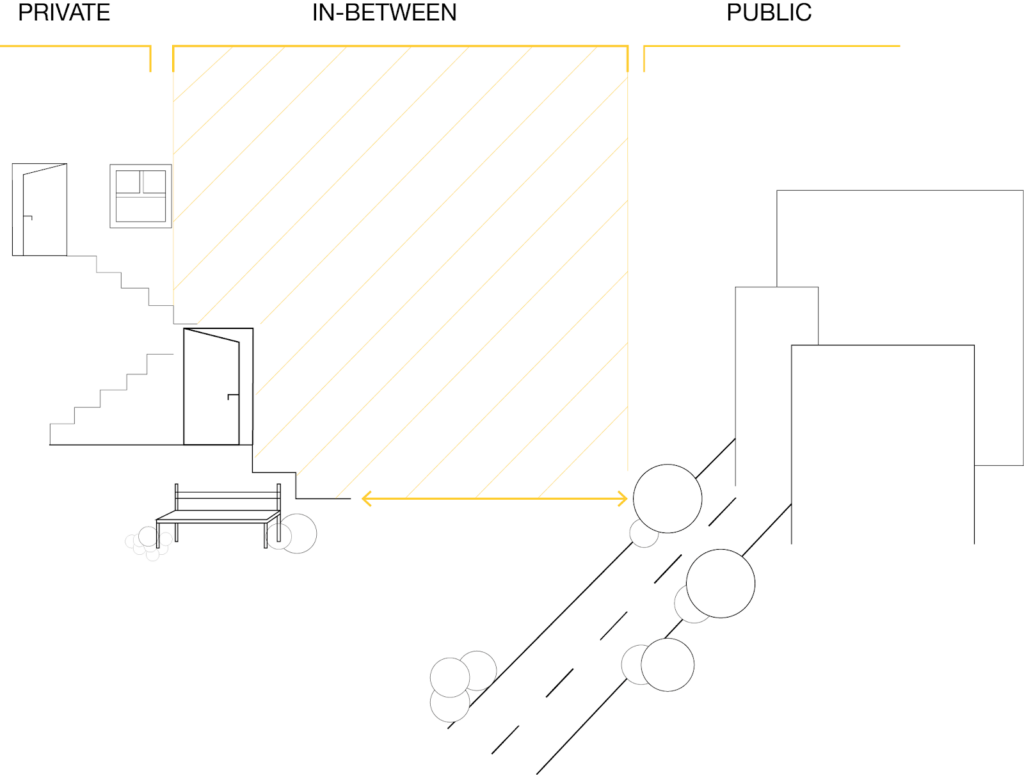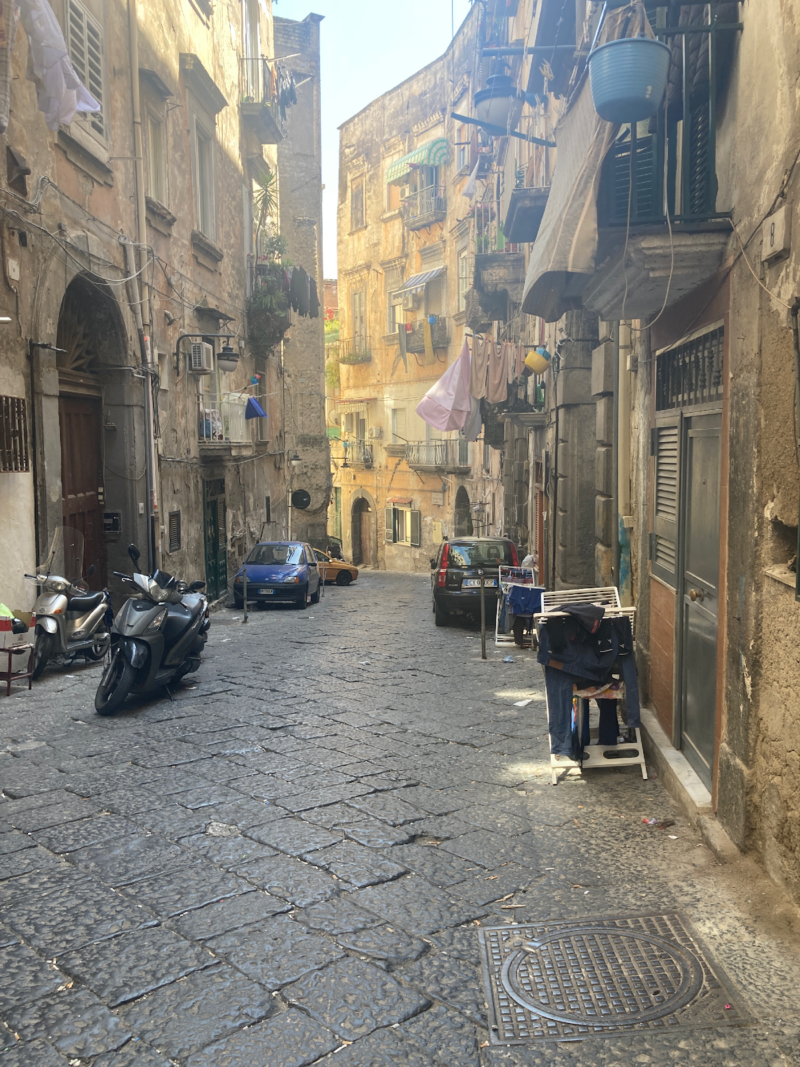Author: Jekaterina Ancane
A simplified definition of public space might sound like ‘accessible for all’ and private space as ‘accessible for owners or selected individuals only’. Yet, the interaction between users and spaces adds greater depth to these terms and results in a complex relationship between the private and public. These relationships have been widely discussed among urban researchers, often integrated within the topics of spatial justice and space ownership. Across these discussions, the characteristics of public and private gradually lose their physical, place-bound qualities and enter the field of the realm. Unlike space, realm goes beyond spatial definition and is formed through the relationship between users, intangible bonds and interactions that develop as a result of space’s physical and spatial qualities yet can span further than the space itself. Consequently, public and private realms do not always abide by spatial boundaries and tend to intersect one another and move together with their creators – users of the place.
The concept of porosity appears in these discussions of private and public. It is considered to derive from Walter Benjamin’s and Asja Lacis’ elaboration on the daily life of Naples in 1925 who saw the city as a constructed network of urban practices performed in a somewhat arranged way, with porous encounters being able to challenge the structured urban and social order. Realms here overlap, and seemingly private aspects of Neapolitan life such as laundry or an afternoon nap take place on the streets. Such transformations enable temporal and permanent public encounters that expand beyond the allocated public space and consider the existence of spaces in-between. These in-between spaces, in Benjamin’s version, are spaces for temporal expressive acts of encounter that penetrate the city structure and avoid the ‘stamp of definitive’.
A century later, the now modern and metropolitan city of Naples has still retained traces of the same habits as during the age of Benjamin but boundaries between private and public are much clearer in the contemporary residential blocks of our cities. Layouts of buildings and patterns of streets dictate the hierarchy between private and public, often assigning uses to spaces on the design stage rather than allowing them to evolve naturally later on. Yet, even within such rigid layout, private space does not end behind the front door, entailing the presence of additional space before the complete transition to public.

As Benjamin and Lacis note, not only streets are filled with pockets of accidental encounters between private realm and strangers, but the architecture itself provides in-between spaces with “building and action interpenetrating in the courtyards, arcades and stairways”. In residential developments, these elements form spatial boundaries that are more than just orientation tools. With the private realm seen as predominant within the block, preservation of privacy here is a measure of comfort and security. Internal staircases and hallways leading up to the individual homes are considered to be ‘almost home’, yet often not ‘home’ enough to be actively used for anything other than a quick conversation with neighbours. Interestingly, different scenes can be seen on the deck access to an apartment block – while arguably the external hallways might be considered less safe, residents feel free to extend their lives outdoors, with laundry, chairs and more socialising often present on flat landings.
Residential outdoor space offers an interesting example of another place that is not quite public but not yet private. Shared communal spaces accessible only to residents are a common solution for outdoor space provision, in combination with balconies and occasional private gardens for ground floor residents. Often such elements restrict free use of the space, and the possibilities of spontaneous encounters by implementing the strict exclusion of non-residents that threatens to result in rigid and unporous environments. Among other reasons, lack of interaction and being ‘left out’ of the rest of the city and not being openly public can result in poor management of such spaces and are assumed to be left in the residents’ responsibility. Such issues highlight the argument that the same attention given to the design and protection of the private realm within the housing itself should be dedicated to designing spaces that hold the potential to be a transition between the front door and the city. In contrast to assigned and enclaved residential space, open and accessible space in between the blocks softens accessibility and exclusivity constraints. While it still retains some aspects of the almost private realm through the condoned behaviour of users, it doesn’t restrict the presence of casual passersby.
In conclusion, the relationship between public and private spaces in urban environments is complex and evolving. The concept of porosity highlights the potential for in-between spaces to challenge traditional, strictly assigned boundaries. To create successful public realms, urban design should prioritise the careful design of these in-between spaces, which can foster interaction and bridge the gap between public and private realms.






